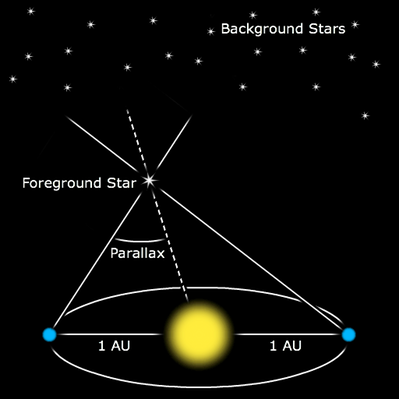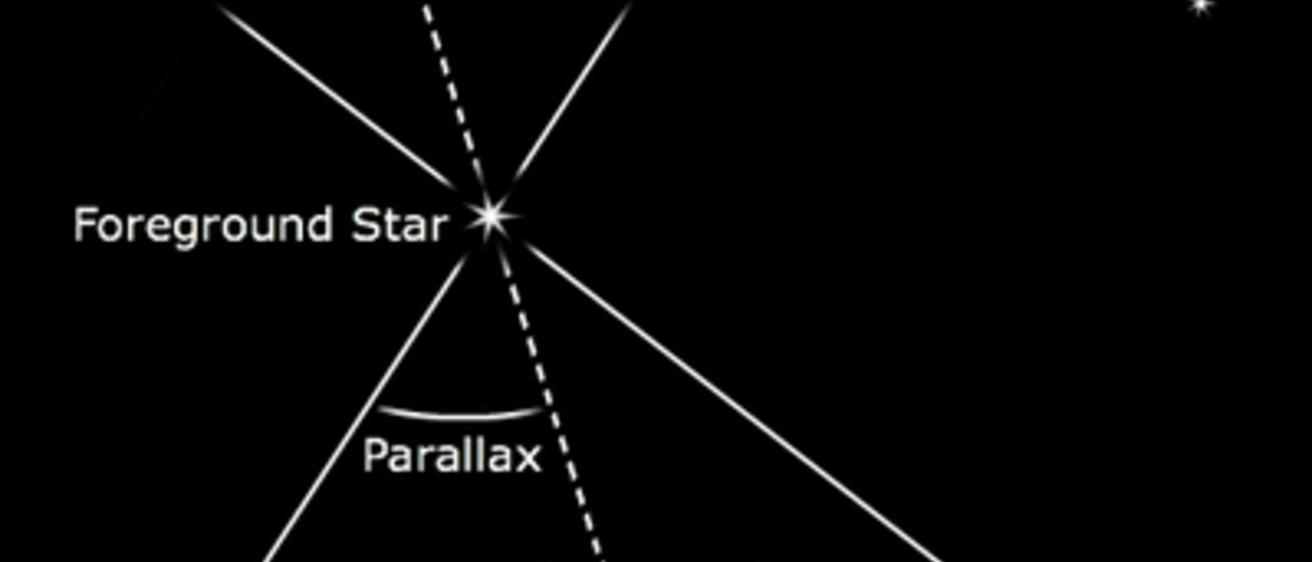
Stellar Parallax
Parallax is the observed apparent change in the position of an object resulting from a change in the position of the observer. Specifically, in the case of astronomy it refers to the apparent displacement of a nearby star as seen from an observer on Earth.
The apparent displacement of a nearby star is an observed angle, so we can use the Small Angle Formula to find the distance to the star.
Since we can measure the angular shift in apparent position over a six month time period (see the image above), we set d equal to 1 AU and will solve for D, the distance to the star.
Read the following paragraph concerning the star Alpha Centauri and answer the questions below.
Alpha Centauri (α Cen) is the nearest star system to the Sun. It is the third brightest star in the night sky, after Sirius and Canopus, but lies so far south that it is visible only from latitudes below 25° N. Its two bright components, A and B, consist of a yellow G star, similar to the Sun but about 200 million years older, and an orange K star of the same age.
These two stars are moving around each other every 79.9 years in a highly elongated orbit (eccentricity 0.519) with a mean separation of 23.7 AU, which is a bit more than the distance between Uranus and the Sun. The angular separation between the two stars is ~17.7 arcseconds. Biannual observations of the binary star system shows an apparent change in position of ~ 0.75 arcseconds. No planets have been found in the system to date.

